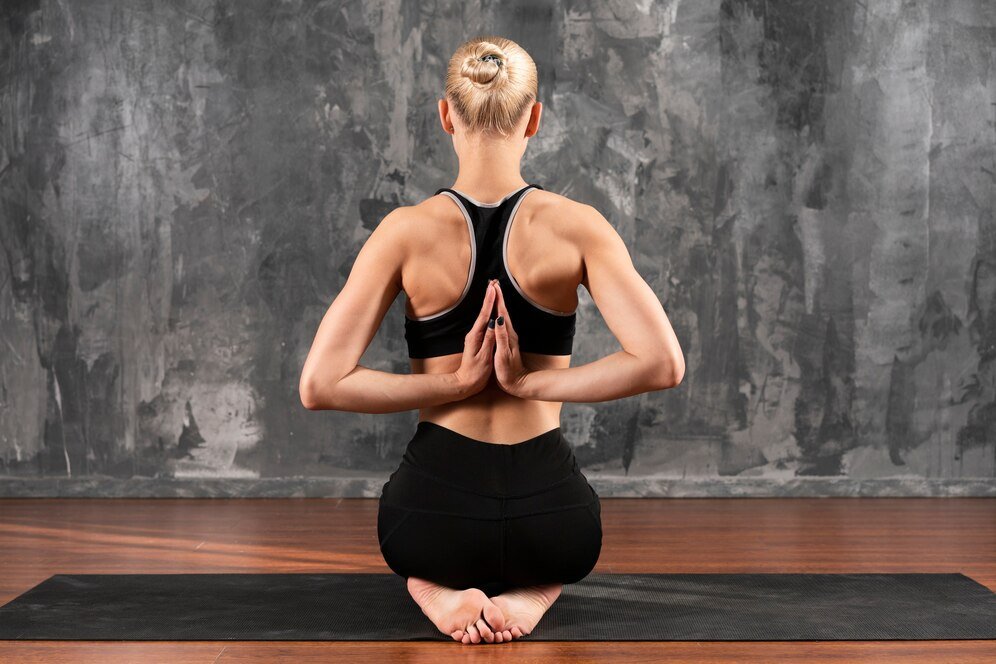Yin Yoga is a distinct style of yoga characterized by specific passive poses, known as yin poses, which are held for extended durations, typically ranging from 3 to 10 minutes. Although the development of this yoga style is attributed to Paul Grilley in the 1980s, the practice of maintaining each pose for longer durations originates from classical Hatha Yoga, originally practiced by monks.
What Sets Yin Yoga Apart from Other Yoga Styles?
There are numerous styles of yoga, varying from more active (yang) to more passive (yin). Yang yoga focuses on engaging your body’s muscle tissues, whereas yin yoga targets deeper connective tissues such as tendons, fascia, and ligaments.
The primary distinction between yin yoga and other yoga practices lies in the duration for which each asana (posture) is held. Dynamic forms of yoga, such as Vinyasa Flow, involve holding each asana for 5 to 10 breaths, with continuous movement between poses.
Conversely, in yin yoga, poses are held for 3 to 10 minutes, allowing deeper, less flexible tissues in your body to stretch. Unlike other yoga forms that emphasize muscle strengthening, yin yoga is more likely to enhance overall flexibility and range of motion.
Yin yoga also emphasizes conscious and controlled breathing, often featuring relaxed belly breathing. This close practice fosters a connection with one’s physical self, emotions, and sensations.
Due to its ability to open both body and mind, yin yoga may be utilized in behavioral treatment centers to address conditions such as eating disorders, addictions, and trauma.
Tips and Techniques for Yin Yoga
Yin yoga aims to balance the body by working on deep connective tissues. Here are some tips to guide your yin yoga practice:
- Practice Slowly: Hold each position for a sufficient time, at least a few minutes. If discomfort arises, adjust the depth or angle of the pose, or gently exit the position.
- Aim for Comfort, Not Perfection: The goal of yin yoga is not to achieve a perfect pose. The best way to target specific body areas can vary from person to person.
- Focus on Yourself, Not Others: Although our bodies might look similar externally, every skeleton is unique. What’s possible for one person may not be for another. Instead of comparing your postures to others’, concentrate on what feels best for you.
How to Practice Yin Yoga
For beginners, practicing yin yoga under the guidance of an instructor is recommended. Yin poses are deep and serene, and an instructor can help navigate each session.
Yin yoga classes proceed slowly with a focus on internal exploration. Regardless of your experience level, a yin yoga instructor will encourage experimentation with each pose and help you appreciate your unique range of motion. Since every body is unique, physical alignment and joint mobility will differ from person to person.
Benefits of Yin Yoga
Like other yoga forms, yin yoga offers numerous benefits, including:
- Enhanced overall flexibility
- Improved circulation
- Increased range of motion in joints and ligaments
- Encouragement of breath connection
- Better emotional balance
- Reduction of stress, depression, anxiety, and sleep disturbances
Is Yin Yoga Suitable for Beginners?
Yin yoga has gained popularity quickly because it is beneficial for both beginners and seasoned practitioners. It is an excellent practice for individuals of all ages and abilities.
However, safety precautions should be taken to avoid injuries. It is advisable to attend a few guided classes from a reputable teacher before exploring new yin yoga poses independently.
Examples of Yin Yoga Poses
Yin yoga is a slow practice, so sessions typically include a few poses. Here are some examples you might encounter:
- Shoelace Pose: This restorative pose stretches arms, shoulders, hips, knees, and the upper back. Here’s how to do it:
- Sit on the floor with knees bent and feet flat.
- Place your left foot on the outer edge of your right hip.
- Place your right foot on the outer edge of your left hip.
- When ready, gently hinge forward at the hips.
- Hold the position.
- Release gently and sit back up.
- Switch legs and repeat.
- Dragonfly Pose: This pose gently stretches your hips, thighs, and groin. Here’s how to do it:
- Sit on the floor with legs spread apart as far as comfortable.
- Keep your knees and feet pointing upward.
- Gently fold your body at the hips and walk your hands forward, stretching as far as possible.
- Hold the pose.
- Walk your hands back up and bring legs and feet together.
Additional Tips for Yin Yoga
In a yin yoga session, expect a calm and quiet environment. Slow-paced movements offer deep, supportive stretching, and props like bolsters, blankets, blocks, and bands may be used for extra support.
Prepare to connect with your physical body and emotions. Coordinate your breathing with each movement: inhale as you move into a pose and exhale as you transition out. This can help you relax and avoid holding your breath.
Avoid comparing your poses to others’. Each body is unique, and what works for someone else may not be ideal for you.
Who Should Avoid Yin Yoga?
Although yin yoga is beneficial for most, individuals with osteoporosis should avoid postures that require extreme spinal flexing or extending. Women in their third trimester of pregnancy or recovering from childbirth should also avoid yin yoga due to the hormone relaxin, which increases joint flexibility and the risk of overstretching and injury.
Get in Touch:
200-Hour Yin Yoga | Yin Yoga Retreats | Yin Yoga Training | Yin Yoga Training Courses

